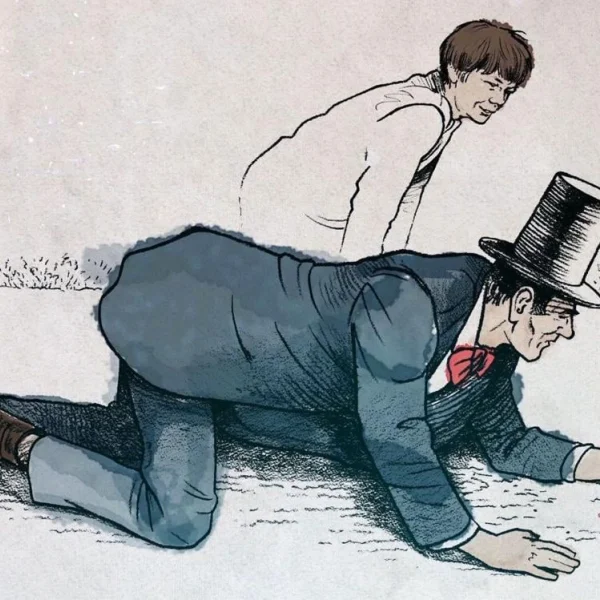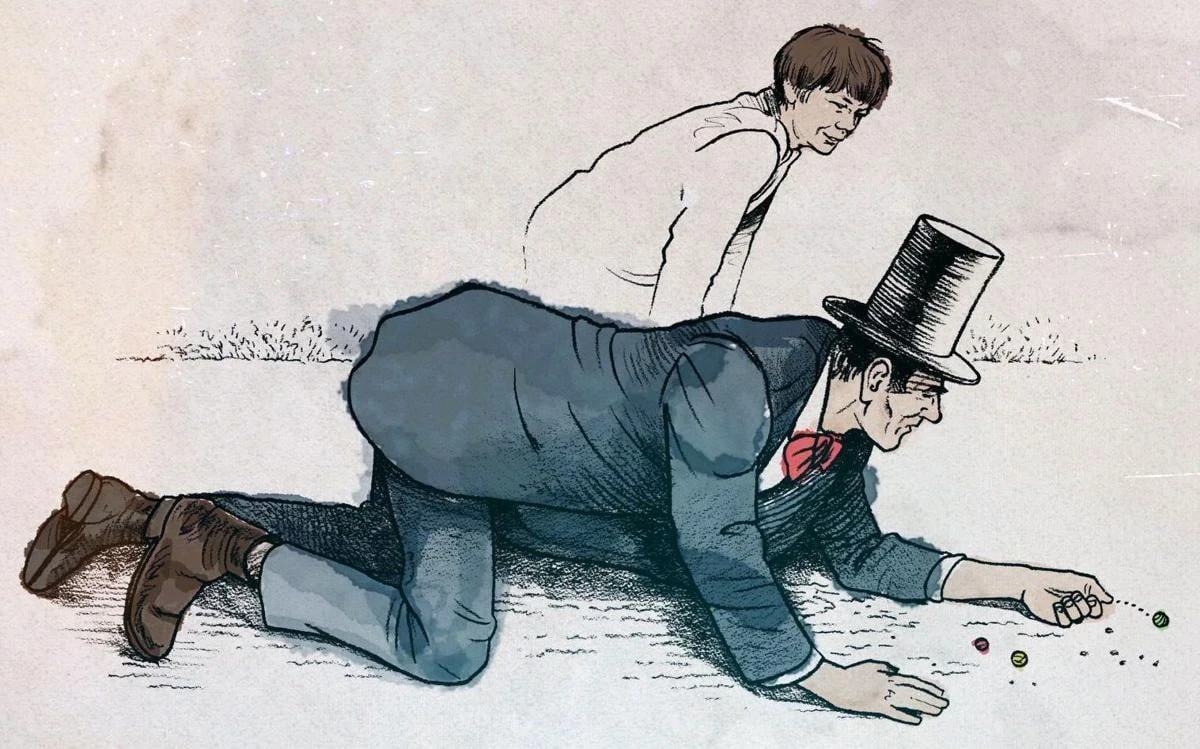Dr. Edwin M. Colburn, an early Bloomington physician, recalled the popularity of marbles and other games in the early 1840s. Not among children, mind you. No, he was talking about elected officials.
“I saw, day after day,” Colburn related in a reminiscence from 1883, “the sheriff, county clerk and other officers in the streets playing marbles and pitching quoits” (the latter was similar to horseshoes, only played with metal rings).
Marbles, or at least small spherical objects made to be knocked around with the flick of a thumb or finger, have been around since time immemorial. To cite several representative examples, marbles have turned up in excavations at ancient Mesopotamian and Egyptian sites, and references to them appear in Roman literature.
This amusing diversion was all the rage among Bloomington’s adults in the 1850s, recalled one old-timer in 1879. “Boston ring and long taw were the favorite games, and the public streets were often filled with the young businessmen of the city, with coats off, engaged in playing marbles with as much enjoyment and interest as if selling calico and molasses at a good profit.” The 100 block of East Front Street (where Rosie’s Pub is today) was said to be the “great resort for the marble players of early Bloomington.”
“Many of the best players are now among the oldest and most esteemed citizens of the city,” added the old-timer in 1879, looking back a quarter century. Indeed, if his recollection is to be believed, Bloomington’s accomplished marble players of the pre-Civil War era included David Davis, Asahel Gridley, Dr. G.W. Stipp, Leonard Swett, Allen Withers and others.
There are several accounts of Abraham Lincoln playing marbles, both as a young man and then as an attorney on the Eighth Judicial Circuit. In New Salem, Lincoln boarded with cooper Henry Onstot. T.G. Onstot, Henry’s son, knew Lincoln well. “My first knowledge of him was as a great marble player,” he recalled in a 1902 reminiscence. “He kept us small boys running in all directions gathering up the marbles he would scatter.”
Ivory Pike recalled an older Lincoln playing marbles in Bloomington. Pike’s uncle Meshach owned the Pike House on the corner of Center and Monroe streets, a hotel the future sixteenth president frequented. “It was just like Lincoln to stop on his way to the courtroom and play marbles with a group of boys,” Pike remembered back in 1931, at the age of 86. “He was a good mixer and seldom forgot a face. It was easy for him to become acquainted with anyone.”
Abe Williams, born in Bloomington in 1870, penned a richly detailed reminiscence when he was 80 years old titled “Up through Boyville in the Old Home Town.” His family home at 1409 N. Main St. was “Boyville headquarters,” he recalled. Their yard included a “fine place in the shade for pitching horseshoes and playing marbles, either ‘little ring,’ ‘bull ring,’ or ‘pat,’ the three common marble games.”
It’s been said that a good definition of the game of marbles is “any game played with marbles.” In the 19th century there were hundreds of different games, and hundreds of variations of each game, as “house rules” altered from region to region, city to city, and even neighborhood to neighborhood.
Marbles were tolerated by local officials, as evidenced by the fact that one of the more popular venues for the amusement was the county courthouse basement! One such game held on Feb. 13, 1879, drew the attention of the local press. John Wesley VanShoick, age 40, wagered and lost a bushel of peanuts to local tailor William Nightwine, who was 59 years old at the time.
As one would expect, tempers sometimes flared. On Mar. 17, 1879, while playing marbles in the courthouse basement, Charlie Smith hit fellow player Tommy Halligan in the head with a nice-sized chunk of coal cinder. “Young Halligan’s wounds were dressed by janitor Newell and at last accounts he was doing well,” reported The Pantagraph.
For boys, railroad tracks were a popular spot to play marbles, as the hard, compact surface between the rails and ties proved an ideal “pitch” to stage everything from a fleeting game to an all-day tournament.
Marbles were a big sport in the warehouse district south of downtown Bloomington. “Complaint is made that the boys congregate on the Big Four and Lake Erie tracks near Lee Street to play marbles,” reported the Mar. 28, 1895 Pantagraph. “No objection is made to the marbles, but [the boys] become so interested in their games that they become oblivious to oncoming trains, and they are in continual danger of being run over.”
Asphalt streets were also a popular surface for marbles, though this too posed dangers. In February 1912, area motorists complained that boys were playing marbles smack in the middle of busy streets, unmindful of approaching traffic.
Boys played marbles mostly outdoors, so the first games were often as good a sign of approaching spring as the robin. When cement sidewalks began appearing in the early 1900s, they became a popular place to shoot marbles. Even so, boys still gravitated to railroad tracks, if for no other reason than to be far from the watchful eye of parents and other meddlesome adults.
In mid-March 1917, a group of small boys were spotted playing marbles on the Illinois Central tracks in Normal (this line is now Constitution Trail). “It is true that some games have been played upon the concrete walks about town, but these are not the real signs of spring,” observed The Pantagraph. “They are merely sporadic cases, but when the boys congregate upon the right of way and play ‘keeps’ with pewees, glassies and agates (three types of marbles), it’s a sure sign that spring is here.”
For many older men, marbles were a part of childhood they could never quite let go. “There is many a man who even today, should you visit him, will lead you to his den,” reflected the March 26, 1918 Pantagraph, “and there, in his archives which have become his holy of holies because they contain the mementoes of a happy, youthful existence, he will proudly exhibit a chest filled with marbles of all descriptions.”

